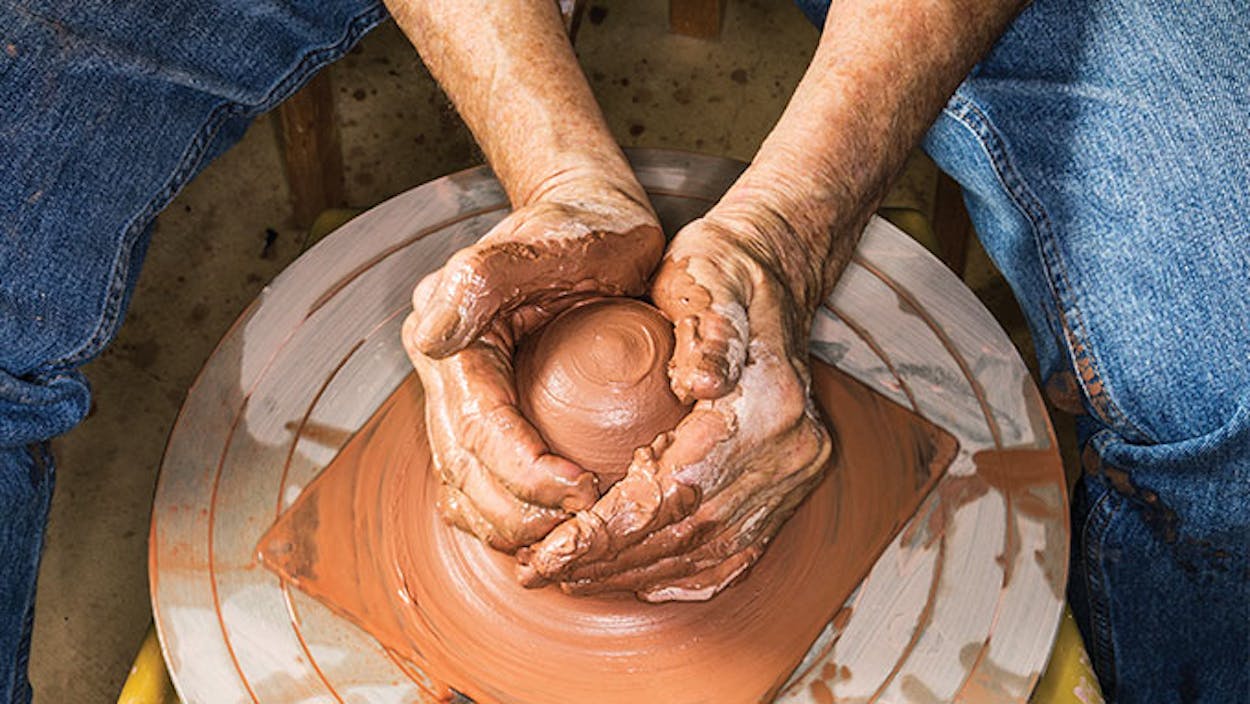Growing up in San Antonio, Linda Perez envied the girls who left school on Fridays saying, “See you Monday. I’m headed to the ranch.” She vowed to one day have a ranch of her own, and even after she left her home state to travel the world, teaching students in rural Zambia and conducting health care research in Peru, her longing for a piece of Texas remained. Finally, in 1993, she returned home and bought some property south of San Antonio, dubbing it the L&M Ranch (named for herself and her daughter, Maya), and soon she was selling grass-fed beef at the Pearl Farmers Market. “The land, the animals, the people—the whole ranching experience was above and beyond my actual dream,” Perez says. Then the drought of 2006 hit. Looking for a distraction from the unpleasant task of culling her herd, she signed up for a ceramics course—and instantly fell in love with clay. Several years later, facing the drought of 2011, she decided to sell her herd, but she continued to live and work on her ranch, converting a porch into a ceramics studio. Today she stays busy creating custom serving pieces for some of the top restaurants and chefs in San Antonio, including those who once purchased her beef. “Who could have known how each of these events would lead to the next?” she marvels. “It’s all been wonderful, and it’s not over yet.”

Q&A with Linda Perez
What’s been the greatest lesson of living and working on a ranch?
One thing living out here has made me exceptionally mindful of is to try to do no harm to this earth and its inhabitants. This includes, as much as possible, not killing anything. I even catch and release scorpions now.
What’s your favorite part of the ceramics process?
A few years ago I would have said wheel work, but now I have come to love each step. I love learning the idiosyncrasies of a kiln, being able to judge temperature by the color of the heat inside, seen through a peephole. Problem-solving is also fun: Why did that plate warp and what can I do to prevent it from happening again? If I stack the kiln in a different way, will the temperature be more equal top and bottom? Will that glaze be more exciting if the layering order is switched?

Is there a particular color you are most drawn to?
I haven’t met a color I didn’t like. I love iron-oxide washes, and shino and celadon glazes, and, of course, black and white. In making tableware, however, I want colors that will complement the foods they are destined to serve. I ask myself questions like “What colors will look best surrounding a dozen oysters on the half shell or a beautiful salad?”
Do you get anxious opening the kiln and seeing the results of your labor?
Opening a kiln can be like Christmas morning—so hopeful and exciting, yet rarely does one get exactly what one wanted. But I am learning to not be so hasty in my negative judgment of pieces that turn out different from what I expected.
What is the most rewarding part of your work?
My earlier occupations had more-generous goals of helping others and making the world a slightly better place. Having fun every day trying to make functional, lovely things out of clay seems somehow wrong. But I also know that having a great cup of coffee in a mug that feels good to my hands and pleases my eyes helps me start each day happier. I love the idea of my ceramics making someone else’s morning cup of coffee a more special experience as well.
Do you have a favorite type of piece?
I do have a special fondness for the simple, elegant bowl. That form has infinite possibilities, and I find that making the same thing over and over is surprisingly enjoyable. The learning curve in ceramics is ever upward, and there is so much good stuff to learn. Just keep the days coming.
For more information, go to lindaperezceramics.com.







